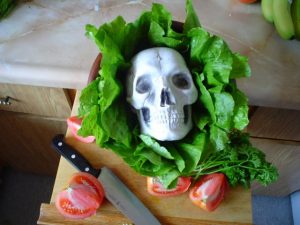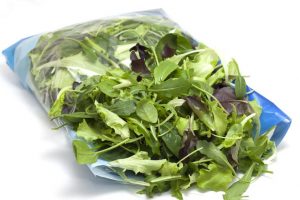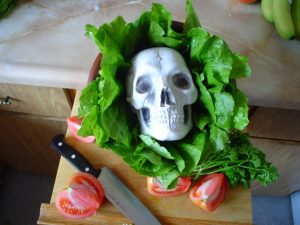Twitter CEO Jack Dorsey recalls as his “most memorable encounter” with Facebook boss Zuckerberg, in a new interview with Rolling Stone.
 “He made goat for me for dinner. He killed the goat,” Dorsey says, before clarifying that he didn’t actually witness the slaughter. “He killed it before. I guess he kills it. He kills it with a laser gun and then the knife.”
“He made goat for me for dinner. He killed the goat,” Dorsey says, before clarifying that he didn’t actually witness the slaughter. “He killed it before. I guess he kills it. He kills it with a laser gun and then the knife.”
When the interviewer rightly questions Dorsey’s use of the term “laser gun”, Dorsey says: “I don’t know. A stun gun. They stun it, and then he knifed it. Then they send it to a butcher.”
Though it was undoubtedly a smart move for Zuckerberg to send the animal to be prepared by a professional after he killed it, he might have also considered hiring a chef, with Dorsey indicating the meat wasn’t exactly cooked when it was served.
“I go, ‘We’re eating the goat you killed?’ He said, ‘Yeah.’ I said, ‘Have you eaten goat before?’ He’s like, ‘Yeah, I love it.’ I’m like, ‘What else are we having?’ ‘Salad.’ I said, ‘Where is the goat?’ ‘It’s in the oven.’
 “Then we waited for about 30 minutes. He’s like, ‘I think it’s done now.’ We go in the dining room. He puts the goat down. It was cold. That was memorable. I don’t know if it went back in the oven. I just ate my salad.”
“Then we waited for about 30 minutes. He’s like, ‘I think it’s done now.’ We go in the dining room. He puts the goat down. It was cold. That was memorable. I don’t know if it went back in the oven. I just ate my salad.”
Being ruminants, goats are a significant source of Shiga-toxin producing E. Coli (STEC) with estimates of 10 per cent contaminated.
A pledge to only eat animals he personally killed was part of Zuckerberg’s yearly self-imposed challenge in 2011. Laser guns weren’t specifically mentioned in the challenge, but at this point nobody would be surprised if he used one. Apparently the goat was one of six he kept at his Palo Alto property.









